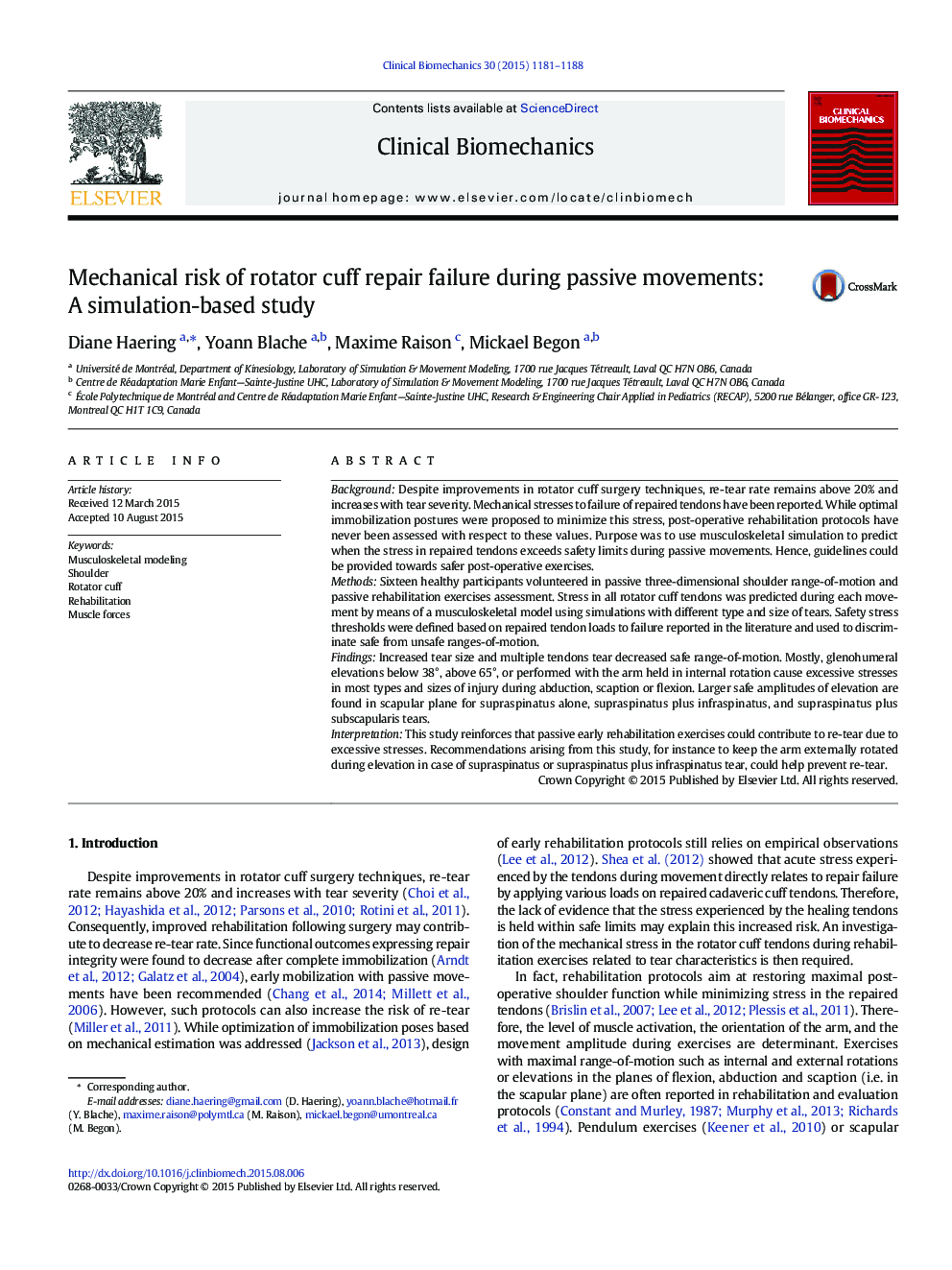| کد مقاله | کد نشریه | سال انتشار | مقاله انگلیسی | نسخه تمام متن |
|---|---|---|---|---|
| 4050090 | 1603748 | 2015 | 8 صفحه PDF | دانلود رایگان |
• Stress in repaired rotator cuff tendons was estimated during passive movements.
• Guidelines for safe rotator cuff rehabilitation movements are provided.
• Type and size of tears influence space for safe movements and their amplitude.
• Elevation below 30° and internal rotation cause large stresses in the rotator cuff.
• Movements with limited stress after rotator cuff repair will reduce re-tear rate.
BackgroundDespite improvements in rotator cuff surgery techniques, re-tear rate remains above 20% and increases with tear severity. Mechanical stresses to failure of repaired tendons have been reported. While optimal immobilization postures were proposed to minimize this stress, post-operative rehabilitation protocols have never been assessed with respect to these values. Purpose was to use musculoskeletal simulation to predict when the stress in repaired tendons exceeds safety limits during passive movements. Hence, guidelines could be provided towards safer post-operative exercises.MethodsSixteen healthy participants volunteered in passive three-dimensional shoulder range-of-motion and passive rehabilitation exercises assessment. Stress in all rotator cuff tendons was predicted during each movement by means of a musculoskeletal model using simulations with different type and size of tears. Safety stress thresholds were defined based on repaired tendon loads to failure reported in the literature and used to discriminate safe from unsafe ranges-of-motion.FindingsIncreased tear size and multiple tendons tear decreased safe range-of-motion. Mostly, glenohumeral elevations below 38°, above 65°, or performed with the arm held in internal rotation cause excessive stresses in most types and sizes of injury during abduction, scaption or flexion. Larger safe amplitudes of elevation are found in scapular plane for supraspinatus alone, supraspinatus plus infraspinatus, and supraspinatus plus subscapularis tears.InterpretationThis study reinforces that passive early rehabilitation exercises could contribute to re-tear due to excessive stresses. Recommendations arising from this study, for instance to keep the arm externally rotated during elevation in case of supraspinatus or supraspinatus plus infraspinatus tear, could help prevent re-tear.
Journal: Clinical Biomechanics - Volume 30, Issue 10, December 2015, Pages 1181–1188
